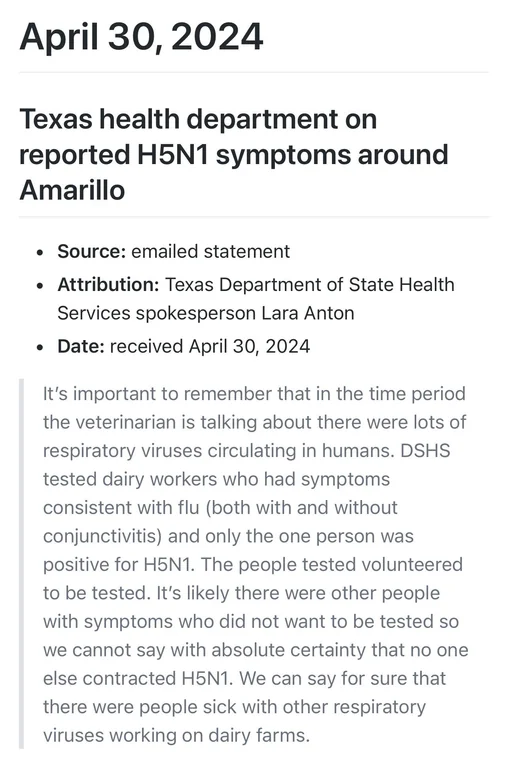1
1
2
1
4
1
5
1
8
1
9
1
Hotwar Farm Docs, Staff Test Negative For Bird Flu | Ranchi News - Times of India
(timesofindia.indiatimes.com)
11
1
H5N1 genome in U.S. milk shows the virus is more widespread than first thought
(canadahealthwatch.ca)
12
1
13
1
This may be our last chance to halt bird flu in humans and we are blowing it
(www.deccanherald.com)
14
1
view more: next ›
H5N1 Avian Flu aka. HPAI
29 readers
1 users here now
A place to discuss the ongoing influenza pandemic circling the globe.
founded 3 months ago
MODERATORS

